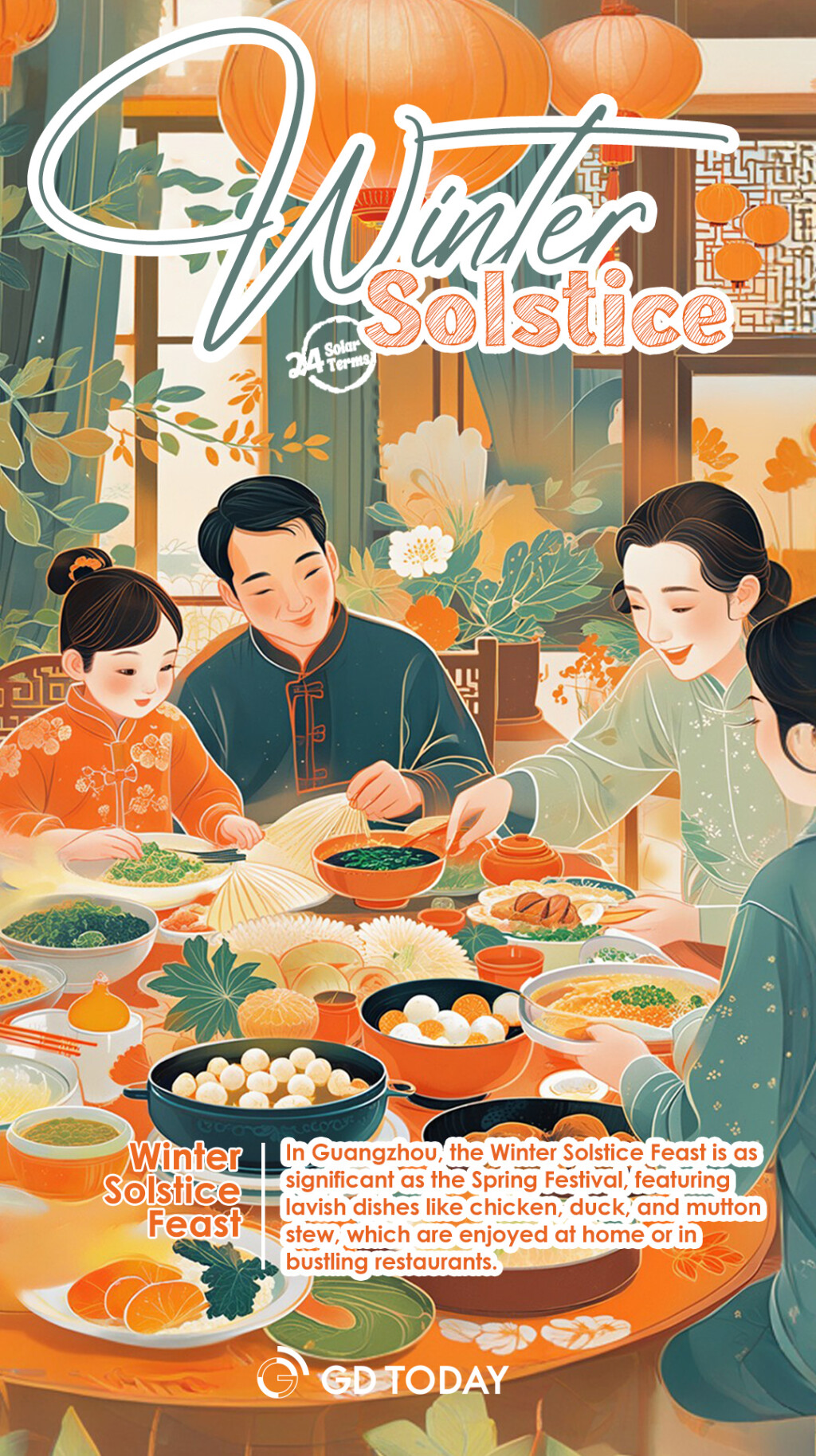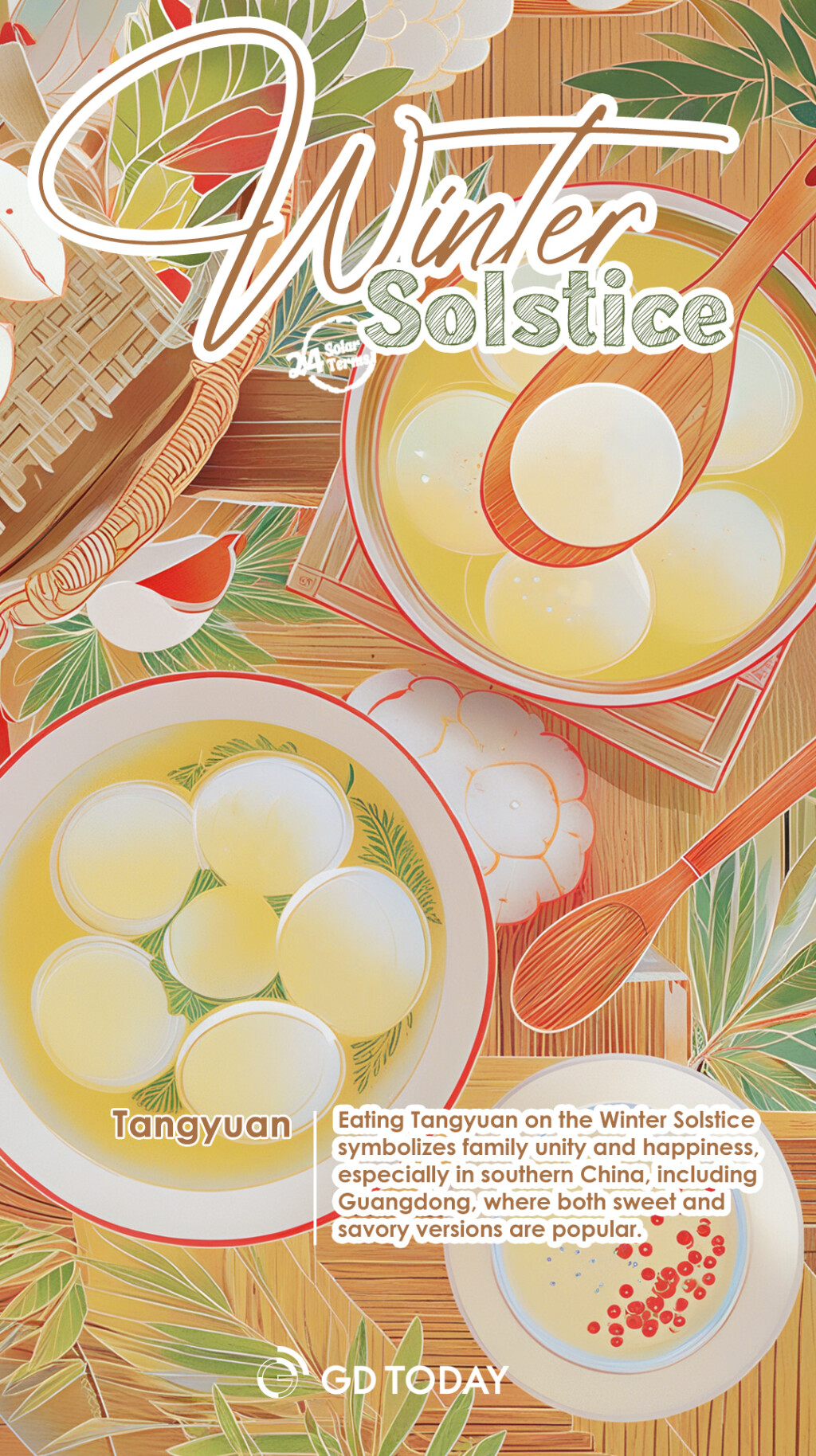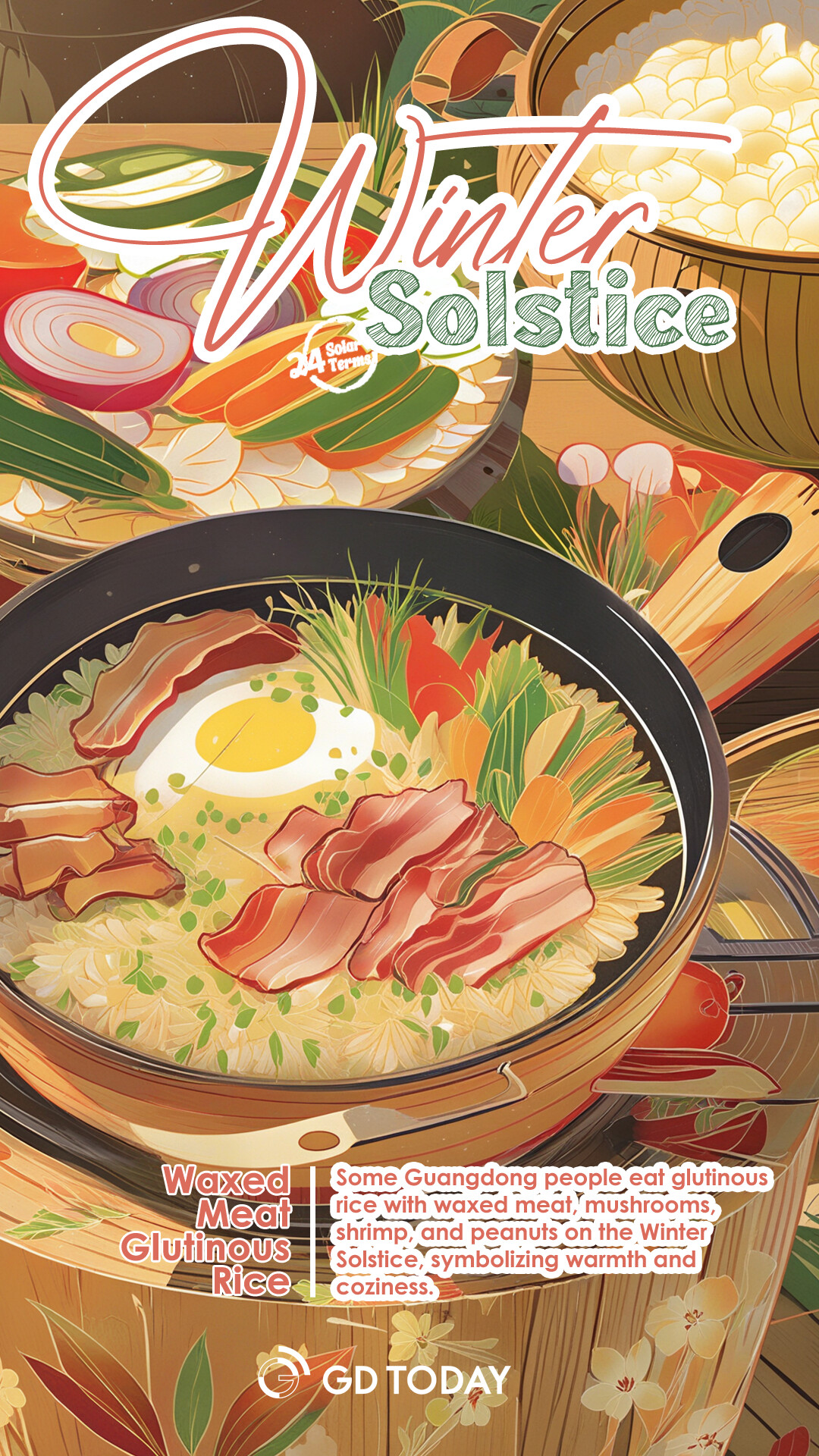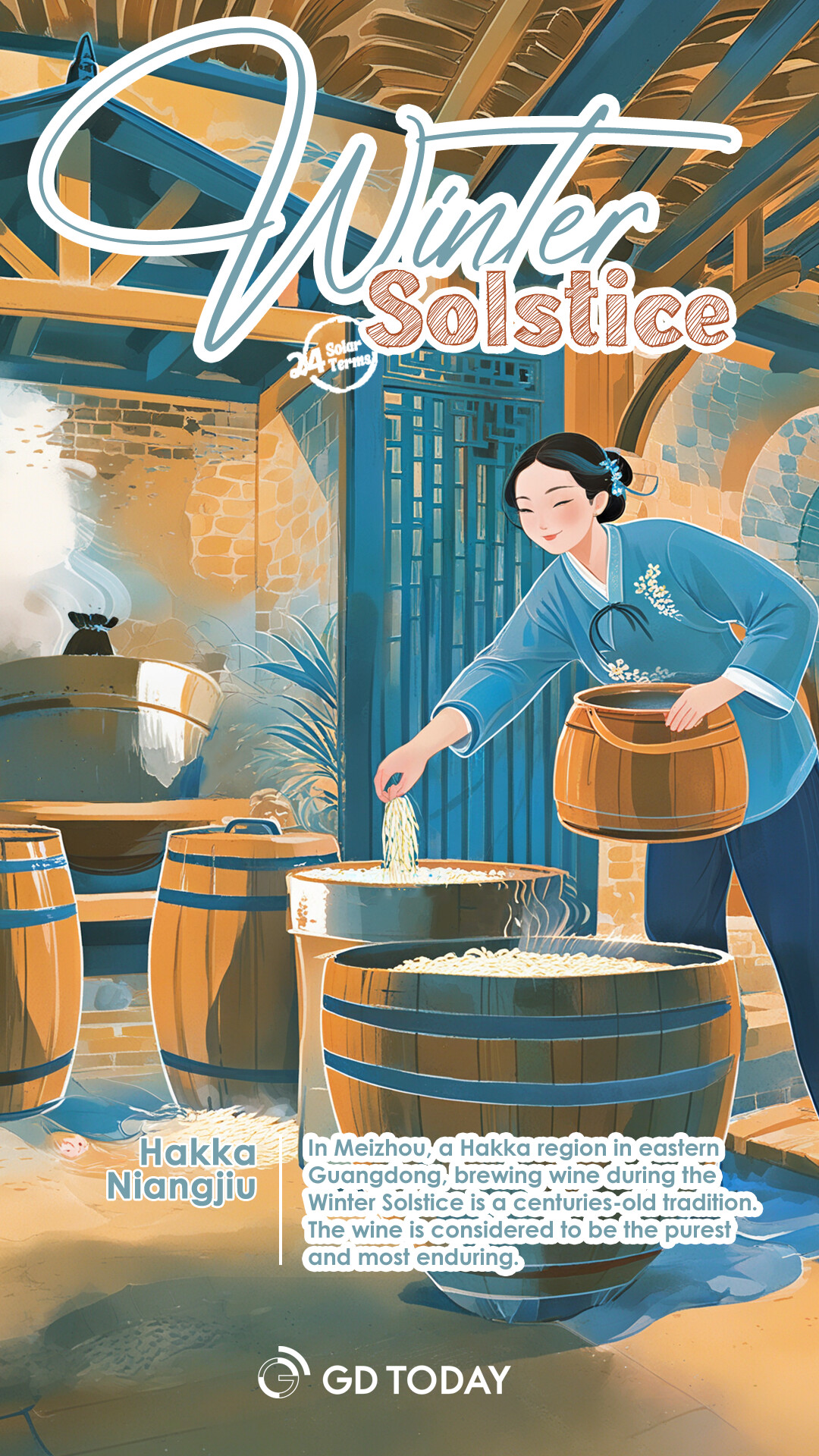December 21 marks the Winter Solstice, which features the shortest daylight hours in the Northern Hemisphere. Among the 24 solar terms, the Winter Solstice is the earliest to be established.
In Guangdong, the saying "Winter Solstice is more important than the New Year" indicates that the Winter Solstice is a highly significant festival for Guangdong people. So, what are the traditional foods eaten during this festival? What customs of the Winter Solstice are observed in Guangdong?
In Guangdong, people generally offer sacrifices to their ancestors on the Winter Solstice and hang paper offerings at graves, commonly known as "hanging winter paper"(挂冬). In certain regions, Winter Solstice feasts feature a variety of dishes, including fish, meat, preserved meat, and clam dishes cooked together, with everyone sitting around the pot to eat, known as "gathering around the stove" (围炉). Additionally, let's explore the food of the Winter Solstice.
Winter Solstice Feast
In Guangzhou, the Winter Solstice holds immense significance, comparable to the Spring Festival. As a result, the city's "Winter Solstice Feast" is incredibly abundant. Neighbors prepare lavish dishes such as chicken, duck, and mutton stew as families gather around the table for a reunion meal. Many also choose to celebrate in restaurants, where lively scenes unfold.

Tangyuan
Eating Tangyuan (sweet glutinous rice balls) during the Winter Solstice symbolizes family unity and happiness, which is a custom for many residents in southern China. This tradition is also popular in various regions of Guangdong, but the preparation methods vary, with sweet and savory options. Tangyuan is a must-have during the Winter Solstice, and the whole family must sit together and eat it, symbolizing family reunion.

Waxed Meat Glutinous Rice
Many native Cantonese still retain the custom of eating glutinous rice on the Winter Solstice, symbolizing warmth and coziness throughout the year. Waxed meat, shiitake mushrooms, dried shrimp, and peanuts are essential ingredients in Cantonese glutinous rice. In this cold season, a steaming bowl of glutinous rice warms both the stomach and the heart. Many native Cantonese feel the Winter Solstice is perfect only after eating glutinous rice.

Hakka Niangjiu
In Meizhou, an eastern Guangdong Hakka region, brewing Niangjiu (a type of rice wine) is one of the most important customs practiced today. This tradition has been passed down for thousands of years and remains popular today. The Hakka believe that water tastes the purest on the Winter Solstice, and wine brewed with it can be stored for a long time without spoiling, bringing a sweet and refreshing taste.
In reality, the Winter Solstice also marks the end of the year. After today, there are only 10 days left in 2024, and a new year is about to begin.

Author | Feng Huiting
Editor | Huang Qini, James, Shen He
















